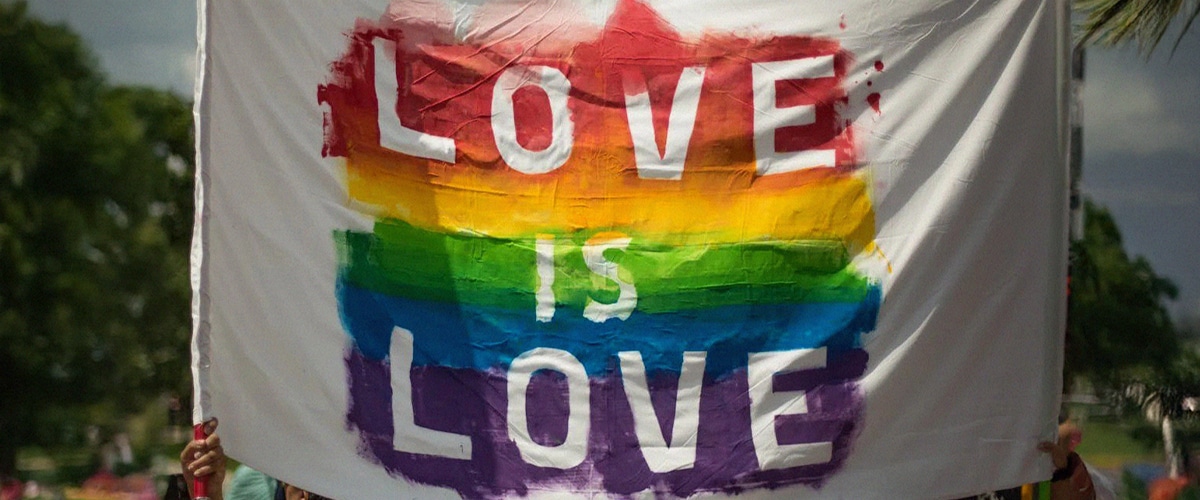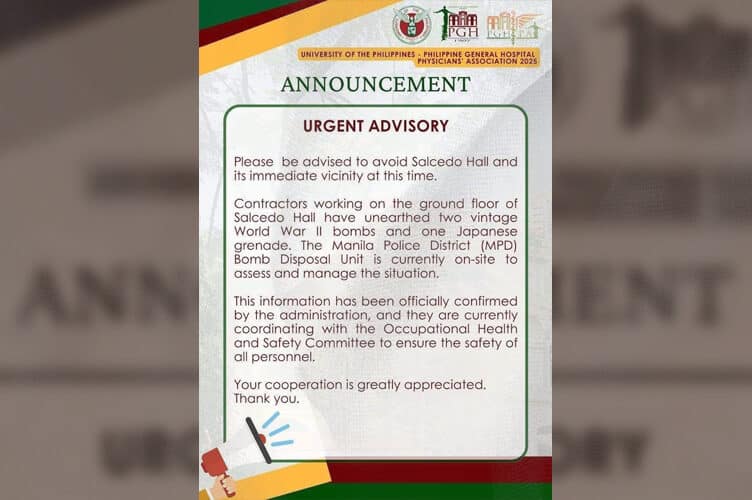IT was the best of times, it was the worst of times. In other words, it is the time where extreme opposites could be true.
For the LGBTQIA+ communities around the world, this paradox rings true.
While strides toward equality and representation have brought progress, persistent discrimination, violence, and inequality are battles that are still being fought.
Nowhere is this duality more evident than in same-sex relationships, where love exists not just between two people but also in the context of the society’s gaze. Social acceptance— or the lack of it— becomes a silent third party that can make or break these relationships.
In places where acceptance thrives, love has room to grow boldly. But where stigma persists, love often finds itself fighting for survival.
To deeply understand how acceptance plays in the same-sex relationships, republicasia presents you tales from three different countries.
One from the USA, where legal rights coexist with lingering prejudice.
Another from Thailand, a country celebrated for its cultural openness toward LGBTQIA+ communities.
Finally, we will take a look at the mirror in the Philippines, a nation caught at the crossroads— standing next to its culturally open neighbor, Thailand, while looking up to its great influencer, the USA, who is also stuck in its own complex path toward acceptance and equality.
USA: Love Fights for Its Place in the Land of Liberty
WHEN Kim Salinas first saw Fiorella Otiniano walking out of their college dorm, she knew she was the one.
“Before we officially met, we passed by each other. I was walking out of my college dorm and she was walking in. She told me she loved my hair and I said thank you and kept walking to my car,” Fiorella recalled.
A few days later, Fiorella heard music coming from the communal laundry room. Curious, she went to check and found Kim with her friends, doing their laundry. They struck up a conversation, and before long, they invited her over to their dorm.
“She says that once she saw me walking out of the dorm she knew she wanted me,” shared Fiorella.

Kim Salinas (left) and Fiorella Ontiniano (right). Photo Courtesy: Fiorella Ontiniano
But she had other things on her mind. She said that back then, she wasn’t ready for a relationship.
“I didn’t want any relationships and I wasn’t looking. She kept coming around and we grew closer together after I sprained my ankle. She took care of me because she saw me post a Snapchat story,” she continued.
“She and her best friend came down to put ‘vapor rub’ on my ankle. It’s a hispanic medicine for all types of illnesses,” said Fiorella with a hint of humor. “After that she never left and then we became close and the rest is history.”
The two were clearly in love. Even though Kim was the first to fall, it did not take long for Fiorella to feel the same.
“Her kindness drew me to her. She’s very sweet and a very good person. We became best friends and could never leave each other’s side. We officially were together our sophomore year in college. We lived in different dorms but we got to a point where she was always at my dorm,” shared Fiorella.
“Our senior year we roomed together with our black lab luna and moved out together after college to Connecticut.”
From then on, their relationship has only moved forward. Just recently, Kim and Fiorella bought a house together—another milestone in their deepening bond. As they left their youth behind, their love evolved as well, maturing and enduring the inevitable changes life brings.
“We have helped one another become better versions of ourselves. Whether it’s a different stage of our lives, loss, or professional and personal growth, we have chosen to love each other time and time again,” said Fiorella.
Her words were unguarded, exuding a quiet confidence that comes from being certain about what she truly feels.
It’s easy to imagine that Fiorella has always carried this confidence in her relationship— especially in a Western country like the USA, often seen as more liberated and open-minded. However, that assumption couldn’t be further from the truth.
Because in the land of the free, Fiorella and Kim’s relationship is still held by the lingering chains of quiet prejudice.
“There are always eyes watching you,” said Fiorella when asked to compare same-sex relationships with the heterosexual ones.
In a society that considers ‘straight-couple’ relationships as the default, despite the leap of legalization of LGBTQIA+ rights, love like theirs is still met with scrutiny and silent resistance.
“We face public judgment every day that we step out even though we don’t give in to societal pressures,” Fiorella said.
Her words were tamed but there was a subtle hardness in them.
“Before same sex was legalized I felt like I couldn’t give Kimberlly a lot of public shows of affection. I felt like people could get us in trouble. I didn’t feel accepted so my partner respected that,” she added.
It was June 26, 2015 when the Supreme Court case in Obergefell vs. Hodges made a landmark decision that enabled marriage equality to become the law of the land, legalizing it in all 50 states of the USA. The world celebrated with this decision as the USA is known to be a global powerhouse. They considered this as another advancement in the human rights aspect.
But despite this, the deeply fired up hate by some people is not easily extinguished.
For example, in a report released by the Federal Bureau of Investigation (FBI), they said that there was a rise in reported hate crimes against LGBTQIA+ individuals in 2023. Incidents related to sexual orientation reached 2,296, while 542 cases involved bias against the victim’s gender identity.
These are the things that Fiorella and Kim are up against. Fiorella acknowledged that although the legalization of same-sex marriage advanced their community’s advocacy, the war is far from over.
“We talk about it [marriage] often, considering the fact that we would like to get married soon, but I don’t think the legal recognition affects our views on commitment and our future,” said Fiorella.
She admitted that despite the current atmosphere of hostility in the US, particularly toward same-sex relationships, loving Kim was something she could never give up.
“Even if same-sex marriage is illegal in the US, I would still happily say that I am married to my beautiful wife,” she concluded.
Thailand: Where Love Finds a Sanctuary
Yong and Mike are a Filipino couple based in Chiang Mai, Thailand, who have been there for almost 12 years already, working as teachers. They became known for the vlogs they upload online, in Youtube and Tiktok, which illustrate their life as a couple living there.
“Sabi ng friends ko, mas madali daw makahanap ng work sa Thailand, so we moved to Thailand to find a job. And ang pinakamadaling job sa Thailand is actually teaching,” Mike said during the interview.
When asked how the two of them met, Yong and Mike couldn’t help but share a suppressed laughter.
“Before mag-Thailand, kami ay mag-best friends. And ang tawagan namin ay ‘bes’,” Yong remembered with a little smile.

Mike (left) and Yong (right). Photo Courtesy: @yongandmike
For Yong, it really all began with a sleepless night. He was experiencing a sort of ‘identity crisis’ at that time, unable to fully express himself. This led to him creating another Facebook account, one that is separated from his original one.
It was on this new account that he saw an online group for the LGBTQIA+ community which provided a safe space for people to meet.
It so happened that Mike was the administrator of the group.
“Sa group na ‘yon maraming G-E-B or Grand Eyeball. I’m from Bataan, ‘yung ibang members nasa Manila, and siya [Mike], nasa Mindanao,” said Yong.
Mike was originally from Surigao del Sur.
“Dahil siya ang admin, nagplano ang members ng grand eyeball, kasi papunta siya ng Manila,” continued Yong.
The year was 2010. Along with the other LGBTQIA+ members of the group, they decided to meet in the Mall of Asia (MOA). It was Mike and Yong’s first time meeting each other.
From then on, they began to text and chat more frequently. But it wasn’t until Mike invited Yong to Thailand that something really bloomed between them.
It was 2013. Mike, who was a nursing graduate, left his career in the Philippines and found a teaching job in Thailand. He invited Yong, a marketing graduate, to join him, learning that the latter was also unsatisfied with his job in a call center company.
“No’ng naging mag-housemate na kami, parang doon talaga siya nag-bloom. Doon talaga kami nagkakilala,” said Yong, as he and Mike both exchanged glances.
“Parang ilang months pa lang ako do’n, naging kami na,” he said as they both burst into laughter.
“We were put in a place where it’s very possible for love to bloom,” said Yong.
He likes to think that destiny had a hand in their love story, weaving its miracle into the backdrop they found themselves in.
“Parang doon kami talaga dinala sa lugar na ‘yon. Kasi ‘yung unang-unang workplace namin, sa may kabundukan dito sa Thailand. So wala kaming ibang nakaka-interact,” said Yong, as Mike smiled beside him.
Yong said that there was no single moment that stood out when they fell for each other. Instead, it was a gradual process that began in friendship and developed into something more.
When asked what made them stay for so long in Thailand, they said that it wasn’t actually a conscious decision.
“Living in Thailand isn’t financially rewarding,” said Yong, “but maybe we stayed because it’s not our priority. Not really. It’s because we have each other.”
They both said that Thailand’s slow living fits their chill vibe. There was not much pressure to deal with in the country which also helped them in their relationship.
They said that even with Thailand’s legalization of same-sex marriage, they don’t feel the pressure to go into it because same-sex relationship in the country has been widely accepted ever since way back.
“It’s not a conversation for us,” said Yong.
“Not now,” added Mike with a knowing smile.
The pressure to marry isn’t as overwhelming for Yong and Mike, as Thailand’s acceptance of same-sex relationships allows their love to thrive without the need for formal validation. For them, marriage isn’t about proving their commitment—it’s simply a choice they can make on their own terms.
“If people would ask us kung ano ‘yung specific experience ng isang LGBTQIA+ couple in Thailand, we would say pare-parehas lang sila,” Yong explained.
By this, he meant that LGBTQIA+ couples in Thailand are treated much the same as their heterosexual counterparts, with little distinction in how their relationships are perceived.
“Kasi the community is very blended sa Thai society, sa mga bata… it’s very normal. It’s not seen as a reason to bully you. The parents also are very accepting of their children if they’re in that category, unlike sa Pilipinas,” he said.
“I remember sa Pilipinas, ‘yung word na bakla is still very stigmatized. You would just feel na, it’s an insult thrown to you. Pero dito sa Thailand, lalo na kami teachers, mga estudyante ang nakakasalamuha namin. You would feel na it’s very embedded sa Thai society. Makikita mo rin siya sa pop culture like BL (boys’ love) series and GL (girls’ love) series. And most of the fans are actually straight women. It’s not something novel to them. It’s not something new,” said Yong.
“Normal lang siya dito,” Mike added.
But despite the progressive outlook of the country, Yong said that there are also some challenges, although they are not as magnified as in the other more conservative nations.
“One more profound story that I have heard came from Thai adults,” said Yong. “Sabi nila, kapag bading ka raw in your current life, it’s actually a punishment from your previous life. So you must’ve been a sinner in your previous life. So kung bading ka ngayon, ibig sabihin, you’re being punished.”
This belief, though negative and likely rooted in Buddhism (a significant influence in Thai culture), has inadvertently led to greater acceptance of gay individuals and other genders. It also introduced another stereotype: that gay individuals are seen as more hardworking.
Some Western ideals of masculinity have made their way into Thai social media and, by extension, influenced Thai beliefs. This has occasionally resulted in insults directed at some gay individuals, though such incidents remain relatively rare.
“Some of the kids na tinuturuan ko, they started to use the word gay as an insult in the Thai language. So do’n ka lang naisip na, from the outside, high acceptance, pero among the youth, meron palang gano’ng angle na katulad sa ‘tin,” shared Yong.
But Yong’s case remained an isolated case. Mike said that he didn’t have the same experience.
“Minsan naiisip ko, sana hindi ko na lang naiintindihan ang Thai language para ‘di ako affected,” said Yong.
But he also added that these problems are not actually systemic. Thai’s policies, government, and culture were very accepting. Not including Yong’s experience, they never felt discriminated against.
They said that Thailand’s high social acceptance with same-sex couples played a huge role in the success of their relationship.
“If we were a couple doing the same things but we were in the Philippines, I don’t think we would be as open as we are right now,” said Yong.
“Although you know, we don’t really care much about sa sinasabi ng ibang tao, it’s the people that are close to us or important to us— family— we would care,” he added.
While Mike was accepted by his family and openly shared their relationship, Yong wasn’t as forthcoming with his own.
“Even no’ng nasa Thailand kami, online kami as a couple, meron pa ring nasasabi ‘yung pamilya namin na nasa Pilipinas. So what more if we have this lifestyle na nasa Pilipinas kami? I think mas marami silang masasabi,” Yong said.
It wasn’t until their seventh year as a couple that Yong’s relationship with Mike was eventually revealed to his family, but not by his own choice. His elder sister stumbled upon a photo of him and Mike online, prompting his mother to confront him.
“I don’t think she was accepting in the beginning. Marami siyang worries,” said Yong.
Among these concerns were the fear that he and Mike might never have children, as well as stereotypical misconceptions about HIV.
But over time, love still won. Yong’s mother gradually accepted her son’s identity, along with his partner.
“But I heard sinabi ng Mom mo na gusto niya ring may makasama ka ‘pag tumanda ka,” said Mike to Yong.
Yong agreed.
“Ngayon naman, after 12 years, mas okay na siya. Meron na nga rin kaming vlog din,” said Yong, pertaining to his and Mike’s vlogs.
“Our relationship is super out there na.”
Yong said that the difference between the level of social acceptance in both countries could all boil down to a huge difference between them: their religions.
While Thailand is majorly influenced by Buddhism, the Philippines is a very Christianized country.
“I think kasi ‘yung acceptance, love, and all of that dito sa Thailand… There is one factor that plays a big role. And I dare say that it’s religion. That’s my assumption,” he said.
“Sa Pilipinas kasi, the religion shapes our culture, our beliefs, up to our policies.”
But Yong also acknowledged that although religion is an integral part of the country’s beliefs, it is not impossible for them to exercise empathy on a societal level.
“Siguro ang pwedeng matutunan ng Pilipinas sa Thailand ay ‘yung pa-chill-chill life. ‘Yung wala masyadong pinapatunayan.” He smiled.
“Gano’n ang mga Thai people. Hindi sila laging may pinapatunayan sa buhay. They mind their own business. They have their own opinion on things, but they mind their own business unless it affects them,” he said.
Philippines: Pride and Prejudice
Carlos “Caloy” Enrico Hermoso and Kristoffer Jon Angue’s love story began with a swipe.
“Nagka-match kami sa isang dating app on a random Saturday. We hit it off agad sa chat, so nag-call kami—hindi namin namalayan, three hours na pala kami nag-uusap,” Caloy shared.

Kristoffer Jon Angue (left) and Carlos “Caloy” Enrico Hermoso (right). Photo Courtesy: Carlos Enrico Hermoso
“Kinabukasan, we went on a dinner date tapos ayun, nagdire-diretso na. We dated for almost three months before we became official.”
That pivotal moment happened on a Friday night.
“Friday night, we were just lying on the bed talking about almost anything we can think of. It felt easy with him kasi, parang ang gaan magsabi ng mga bagay-bagay.”
But what seemed easy on the surface masked a flood of emotions beneath. Caloy had held back his feelings for so long, but that night, the dam broke.
“Hindi ko na kinaya, umamin na ’ko na mahal ko na siya,” he recalled with a laugh. “Nakakatawa kasi he felt the same way. Pero hindi niya masabi kasi natatakot siya—parang ang bilis daw, lalo na since he just got out of a breakup.”
In the end, a playful game of bato-bato-pick sealed the deal.
“I lost,” Caloy admitted, smiling. “So ako na nagtanong if he wanted to be my boyfriend.”
The rest was history.
Though Caloy and Kristoffer’s story began on a light and playful note, the challenges they faced were anything but.
“We’re fairly lucky na kalakhan ng oras ng relasyon namin ay sa Laguna. We used to study in UPLB (University of the Philippines Los Baños) and people were generally accepting,” shared Caloy.
But once they stepped outside the campus, a sense of weariness set in. Actions that felt ordinary for other couples became a source of unease for them.
“Kapag nasa Manila o Batangas kami, may mga bagay na hindi namin nagagawa. Goodbye kisses before riding the bus or holding hands while walking sometimes felt risky kasi baka mapag-tripan kami ng mga hindi namin kilala,” said Caloy.
“‘Yung mga bagay na normal naman naming nagagawa dati, kailangan namin itago kasi we fear for our safety din. Thankfully, wala pa namang nangyayaring ganun pero ayun nga, we can’t be too complacent din kaya we try to be as discreet as possible in front of other people na hindi namin kilala.”
But the challenges didn’t stop with the threat of strangers or the possibility of hate crimes. Even within their circle of loved ones, obstacles persisted.
“It differs for us. I’m fortunate to be out and accepted by my family, even extended, and friends. But for him, immediate family pa lang nakakaalam and medyo may aversion pa rin lalo na sa father niya,” said Caloy.
Even though the Philippines has made notable progress in recent years in embracing same-sex relationships, deep-seated cultural and societal barriers continue to pose challenges. While representation in media and public discourse has improved, acceptance remains uneven, often influenced by traditional values, religious beliefs, and misconceptions.
This dichotomy creates an environment where love exists, but not always free from judgment or constraints.
Caloy strongly feels this. Their relationship was embraced in progressive spaces, such as their university, where inclusivity thrived. However, outside these safe zones, they often found themselves treading cautiously, afraid of an environment that wasn’t always as accepting.
“Para sa aming baklang magjowa, lagi at laging may titingin. I wouldn’t say na lagi namang masama ang perception samin, as I know some people are accepting din, pero ramdam minsan talaga yung disdain at judgment ng ibang tao… kaya we’d rather not show our affection as much in public,” said Caloy, unable to hide the sadness.
“Minsan, nakakatampo pag naglalakad kami tapos bigla siyang bibitaw sa kamay ko. Titingin lang naman ako sa direksyon ng tinitingnan niya kaya naiintindihan ko. Ano nga ba naman yung ilang minuto na hindi muna kami maghawak ng kamay kesa sa posibilidad na mabugbog kami o mapagtrippan ng mga tao sa kalsada?”
Although the Philippines have shown a growing support for the LGBTQIA+ community, with a national survey from Weather stations reporting that people recognize their contributions in the society, the stigma in the existence of genders other than heterosexuality still remains prevalent. They manifest in bullying, banning of transgenders in establishments, and labeling them as sinful or ‘abnormal’.
This is why couples like Caloy often think twice before revealing their relationships. If simply embracing your true self invites judgment, how much more if you openly love in a way that many still view as taboo?
“We’ve always been open about the idea of marriage, and ultimately, that’s our goal. Kung legal ang same-sex marriage sa bansa, mas magiging secure kami sa future,” shared Caloy, but even this dream is tainted with fear.
“Natatakot kami sa uncertainty ng future lalo’t we want to have a family of our own,” he added.
“Sa ngayon, kampante naman kami lalo’t kilala naman kami ng pamilya ng isa’t isa. Kung dumating man yung oras na hindi kikilalanin ng batas ang pinagsamahan namin, madali naming maipaabot sa pamilya ng isa kung ano nga ba talaga yung napag-usapan o napagplanuhan namin.”
But Caloy’s aspiration of marriage seems to be a distant dream for the same-sex couples in the Philippines. Although there are efforts to pass a law for civil union in the country, like the House Bill 1015, there are pushbacks from religious groups.
This is not a surprise since the Sexual Orientation and Gender Identity Expression or SOGIE bill that seeks equality among gender was also hindered from being legalized.
In the end, Caloy said that they felt helpless in the situation.
“Tinanggap na lang namin siguro, na baka ganun talaga, kahit alam naming hindi dapat. Malaya lang kami magmahal at ipakita yung pagmamahal namin sa isa’t isa sa iilang limitadong espasyo.”.
The contrast between Caloy and Kristoffer’s experiences in the Philippines, and the realities faced by couples like Fiorella and Kim in the United States or Yong and Mike in Thailand is striking.
In the US, where LGBTQIA+ are legal and widely visible, hostility and discrimination still bubbles in the surface, creating an atmosphere where love sometimes feels like an act of defiance.
This hugely contrasted Yong and Mike’s story in Thailand—- a country where same-sex relationships are socially accepted, even celebrated.
Meanwhile, the Philippines stands at a crossroad, caught between the slow progress of Western countries like the US and the cultural acceptance seen in Thailand. While Caloy and Kristoffer find crumbs of acceptance in progressive spaces, the reality is that the true freedom to love remains elusive.
The question now is this: which path will the Philippines take? Will it follow the cautious yet hostile atmosphere of the U.S., where love is legal but often met with resistance? Or will it strive to emulate Thailand’s quiet yet profound cultural acceptance, where love blooms freely regardless of gender?
We don’t have the answer yet, as the future is still in the making. But here’s what we’re sure of: the journey is far from over, yet every decision made is another step closer to breaking the walls of prejudice, and making love a right for everyone. #ModernLove
How useful was this post?
Click on a star to rate it!
Average rating 5 / 5. Vote count: 4
No votes so far! Be the first to rate this post.
We are sorry that this post was not useful for you!
Let us improve this post!
Tell us how we can improve this post?








